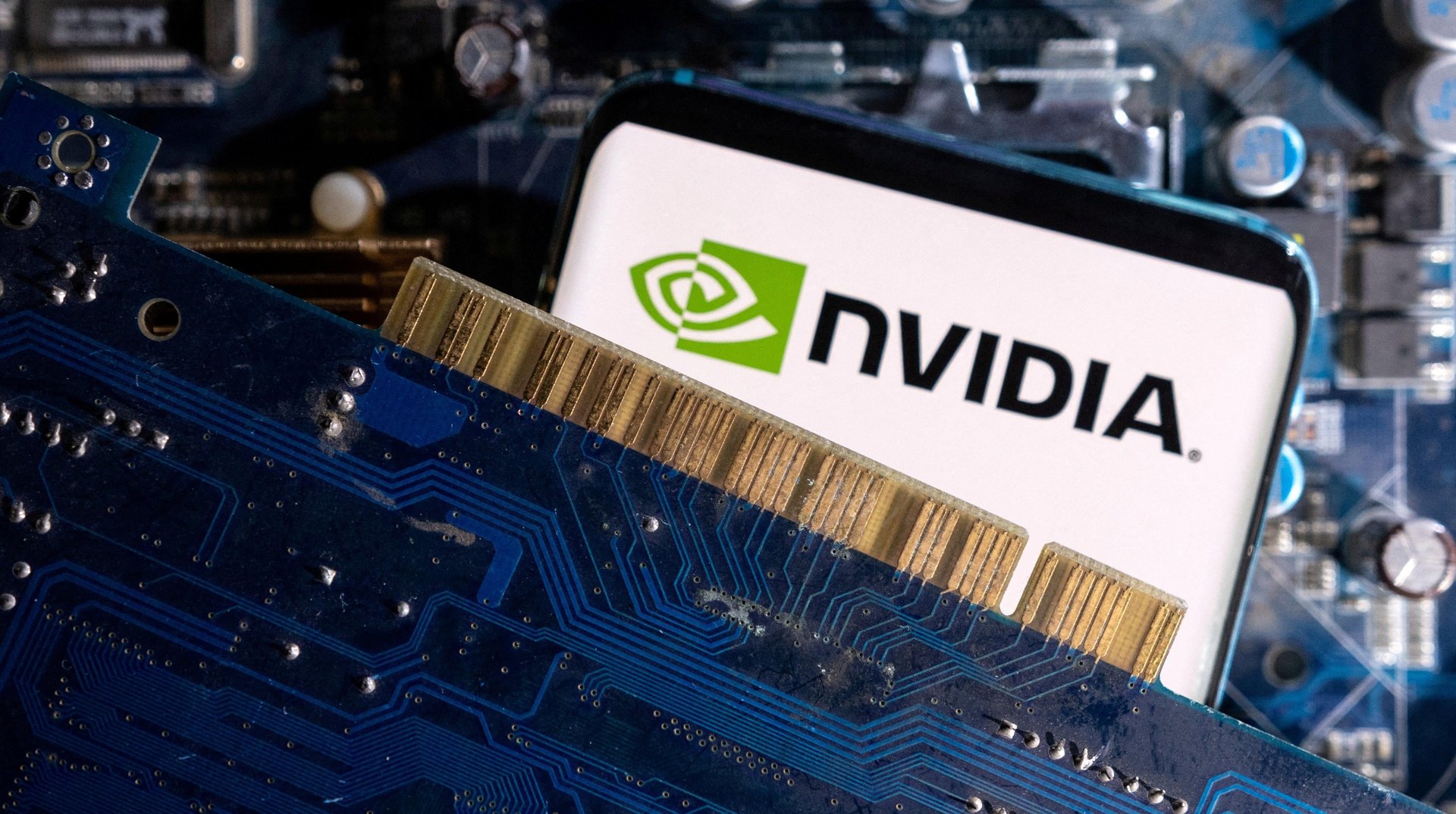Nvidia stock hits an all-time high in anticipation of stellar earnings
As the generative AI wave keeps growing, the chip maker is reaping the windfall

The world’s most valuable chip maker is worth more than ever. A day before Nvidia announced its hotly anticipated Q3 earnings today (Nov. 21), the AI chip specialist’s stock reached an all-time high of $504.09.
Suggested Reading
The market’s optimism is warranted. As tech firms big and small race to deploy generative artificial intelligence, Nvidia is reaping the windfall. The nearly $800 billion company, whose AI chips are the most advanced, could be the biggest beneficiary of the generative AI wave.
Related Content
For the third quarter, Nvidia is expecting about $16 billion in revenue, almost triple its haul during the same period in 2022.
Earlier this year, the company was swamped by demand, thanks to a shortage of graphics processing units (GPUs) and networking equipment. In response, it’s been boosting supply to cement its pole position as the world’s top supplier of AI chips.
Quotable: Generative AI is the biggest tech phenomenon
“Generative AI is the single most significant platform transition in computing history....In the last 40 years, nothing has been this big. It’s bigger than PC, it’s bigger than mobile, and it’s gonna be bigger than the internet, by far.”
—Nvidia CEO Jensen Huang at Microsoft’s Ignite event last week
Charted: Nvidia’s stock is at a record high
A non-exhaustive list of threats to Nvidia’s stock
💪 Competition from Big Tech. Nvidia’s smaller rivals are struggling to stoke investment interest, but deep-pocketed tech giants have thrown their hats in the ring. Traditional chip makers such as Intel and AMD are upping investments in next-gen AI chips. In April, search giant Google said its AI supercomputer is faster and greener than Nvidia’s A100 chip. Just last week, Microsoft announced its own AI chip challenger to Nvidia, which could reduce its reliance on the company. Sam Altman, the recently ousted OpenAI CEO who was swept up by Microsoft chief Satya Nadella, was reportedly fundraising in the Middle East for a new chip venture project code-named Tigris. “Does that now happen under Microsoft?” CBInsights’ Nov. 20 newsletter asked.
🌎 Geopolitical tensions. While Nvidia navigates US–China trade disputes with new chips tailored for the Chinese market, export restrictions have gotten in the way before and could cause more disruptions as tensions simmer. On a smaller scale, US curbs on exports to Middle Eastern countries will also hurt its business.
👐 Double ordering and inflated sales projections. “Given the race to secure chip supplies, some double ordering would occur,” Kyle Rodda, senior market analyst at global trading platform Capital.com, told Quartz. “However, it’s unknown how widespread this is. If it is endemic, the company’s future sales could be severely undermined, especially if a significant downturn or negative shock means orders are withdrawn.”
Nvidia’s outsize growth, by the digits
170%: How much Nvidia expects revenue to grow year-over-year in the quarter ended Sept. 30
70%: Nvidia’s share of the AI chip market
20-25%: China’s share of Nvidia’s data center sales
1.5–2 million: Nvidia’s target for shipments of its sought-after H100 processor in 2024, versus 500,000 this year